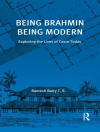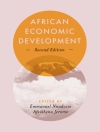The spread of the manufacturing industry is an important part of economic development, creating jobs, new products and trade and investment links between countries. Understanding this process is an important part of understanding how countries develop and how they are affected by current globalization. The economic geography of the world has been changing significantly in the last few decades with old established industrial centres in the developed countries in decline, and new centres emerging in countries that were once thought of as poor and still developing. However, this process has been very uneven with some parts of the developing world still largely non-industrial.
This book aims to explain this process from the perspective of developing countries. It charts current trends in industrial development drawing on available statistics and explores different perspectives on the role the manufacturing industry can play.
The book covers topics including:
- aspects of trade policy as they affect industry
- the international rules of the World Trade Organisation
- the network of links between firms in different parts of the world economy.
Separate chapters examine:
- the special role of small firms and of technology in industrialisation
- government policy towards the encouragement of industry, drawing particularly on the experience of economies in East Asia (the original Asian Tigers)
- recent developments in China and India and their implications for other countries.
The book draws on simple concepts of economic theory but avoids a technical mathematical approach and should be accessible to a wide audience. It extends and updates the author’s earlier work on industrialisation published by Routledge (Industry in Developing Countries, 1990 and Industrialisation and Globalisation, 2002) and aims to present a comprehensive overview of these important contemporary issues. The book is suitable for both undergraduate and graduate level courses, but will also be invaluable to professionals working in development.












